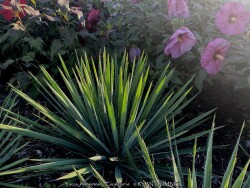
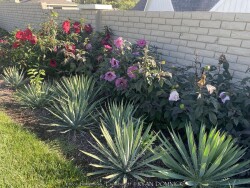
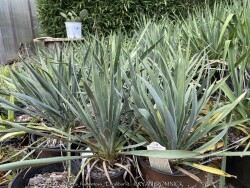
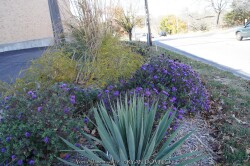
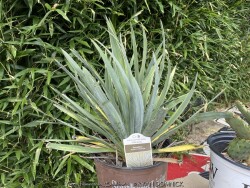
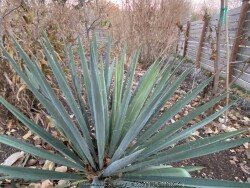
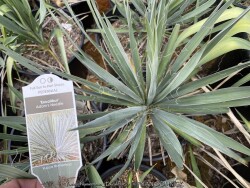
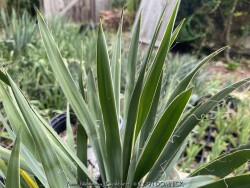
Plant Min Zone: 4a
Plant Max Zone: 10b
Sunlight: All Day Full Sun, Full Sun, Part Sun, Shade
Water / Rainfall: Very Low, Low, Average
Soil Quality: Poor, Average
Bloom Season: Early Summer
Flower Color: White
Berry / Fruit Color: None
Spring Foliage Color: Bluish Green
Summer Foliage Color: Bluish Green
Fall Foliage Color: Bluish Green
Evergreen Foliage: Yes
Winter Interest: Yes
Scented Flowers: No
Drought Tolerance: High
Wet-Feet Tolerance: Low
Humidity Tolerance: Medium
Wind Tolerance: High
Poor Soil Tolerance: Sandy Soils, Rocky Soils, Alkaline Soils (high PH)
Height: 1' - 2'
Width: 1' - 2'
Growth Rate: Slow
Service Life: Extremely long: over 20 years
Maintenance Need: Almost Zero Maintenance
Spreading Potential: Low
Yearly Trimming Tips: Yuccas and Cacti Need No Trimming Except to Remove the Dead Flower Stalk.
Plant Grouping Size: Specimen Planting of 1-3, Small Grouping of 3-5, Medium Grouping of 5-10
Best Side of House: South Exposure, West Exposure, East Exposure, North Exposure
Extreme Planting Locations: Survives Under Roof Overhang, Root-Bound Soils Under Tree, Survives Severe Drought, Tolerates Extreme Heat, Resistant to Rabbits, Top of Retaining Wall Locations, Crevice Gardens
Ornamental Features: Multiple Seasons of Interest, Exceptional / Colorful Foliage
Special Landscape Uses: None
Possible Pest Problems: None
Plant Limitations: None
Shippable in 2026: YES
Adam's Needle Yucca (Yucca filamentosa) is a slow-growing broadleaf evergreen perennial. Blue-green leaves form rosettes about 2-3 feet tall and wide. Tall white flower spikes reliably appear on mature plants in May and June. If pollination is successful, attractive seed heads form later turning to black before cracking open. Although yuccas are more typical of western deserts and grasslands, this one is native to central and eastern United States. Tough as nails, yuccas are the ideal plant for a no-maintenance garden. Normally a plant has specific requirements for success but Adam's needle yucca has only one: it cannot tolerate growing in standing water or really wet soil. Plant in full sun to dry shade in any soil! In the landscape yuccas are often seen planted alone by a mailbox or neglected old landscape because they have outlived the original owners and the landscape service life. The root system of decades old plants may take up the underground volume of a large trash can. Yuccas look best when combined with other flowering plants providing texture and color. In mass plantings, yucca can create an interesting architectural look. Combined with ornamental grasses, yuccas can create stunning contrasts with winter grass colors of pink, orange and rust. Yucca flowers are pollinated exclusively by the yucca moth and deserve a place in native plant and pollinator gardens. This is a true 4-season "Once it's there, it's there forever" plant! 'Excalibur' is a beautiful compact bluish variety with lots of attractive curly white filaments on the edge of the leaves.